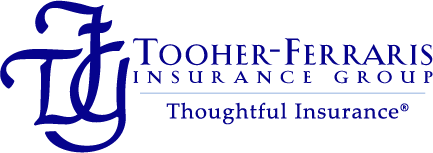For many employers, workers’ compensation insurance is all about one number—the premium quoted. Understandably, employers want to pay the lowest amount possible on this mandatory coverage. While some brokers try to compete on a low bid, those who do miss the chance to educate employers on how their mod affects their premium, and how lowering their mod through targeted improvements in safety, hiring, return to work and other areas will ultimately improve both their direct and indirect workers’ compensation costs.

There’s much more to workers’ compensation than price. Let us show you how an analysis of your mod can identify problem areas in your operations and ultimately lead to cost savings.
What does your mod reveal?
While the mod itself is a single number, an analysis of how your payroll and loss data functions in the experience rating formula can provide valuable insight.
Mod calculation varies by state but generally depends on these components:
- Actual losses from the three prior policy periods, not including the most recent policy period
- Expected losses based on payroll and expected loss rates for the industry
- The amount of each loss, i.e., its severity
- Whether the loss is medical-only, without temporary or permanent disability
- Ballast and weighting values published by the National Council on Compensation Insurance (NCCI)
Generally, the mod is calculated using loss and payroll data from a three-year experience rating period. For example, for a mod factor calculated on Jan. 1, 2015, data would be used for the Jan. 1, 2011-2012, Jan. 1, 2012-2013 and Jan. 1, 2013-2014 policy periods. The data for the previous year (in this case, Jan. 1, 2014-2015) would be excluded.
Most employers realize their mod affects premiums in some way, but they rarely connect the dots and realize what actions they can take to lower their mod and insurance costs. That’s where we come in. We can introduce cost-cutting concepts you may have never heard before and put workers’ compensation insurance in a new light.
How we show our value
The mod is complex, but when you are able to use analytics to show what effect the mod has on your business, you will gain an edge over your competitors and ultimately save a lot of money.
We’ll start the analysis by showing you how low your mod (and associated premium) can be. Your “loss-free” mod—what the mod would be if there were no losses at all—is a number unique to your organization, an attainable goal and something you should be shooting for.
You may wonder what your competitors pay for workers’ compensation coverage. To answer that question, look at the “expected” losses portion on the mod worksheet. This column reflects the average losses for a company with a similar payroll. How do you stack up?
If you have many losses, even if they are minor, those losses will impact the mod more than if there were fewer severe losses. This problem often points to some sort of safety training or cultural issue that needs to be addressed. We’ll show you your frequency ratio—1.0 or higher needs attention.
We’ll also examine whether you have a severity issue, or a problem with not keeping losses medical-only. This almost always points to an opportunity for cost savings and often the need to establish or improve a return to work program. Losing manpower from injuries on the job directly affects your business’ earning power and bottom line.
Mod analysis will reveal problem areas, but fear not—we can deliver solutions. We will outline a clear strategy to help lower the most costly losses or target problem areas, whether they’re associated with a certain type of injury, body part, company location or other data.
What if you were to reduce your losses by 25 percent? Fifty percent? Even more? We can run the numbers to show you real long-term savings and exactly how you can attain them.
We can help tell your story
With the help of analysis, your mod tells a story—about where your business has been and what it can do to improve. With the power of our team, utilizing a leading software tool, we’ll analyze your mod and tell your story. Specifically, we can do the following:
- Calculate and project costs associated with the mod.
- Identify opportunities for improvement.
- Analyze what each specific loss costs you in terms of mod points and premium.
- Reveal cost drivers and the impact of the mod.
- Focus on problem areas, such as frequency or severity of injuries.
- Examine loss trends for types of injuries, departments and more.
- Isolate areas to target with loss control and risk management strategies.
By partnering with Tooher Ferraris Insurance Group, and experiencing Risk Synergy you can better understand factors contributing to your present experience modification and come up with a strategic plan to mitigate future costs. Call Tooher Ferraris Insurance Group today to learn more and get started!



